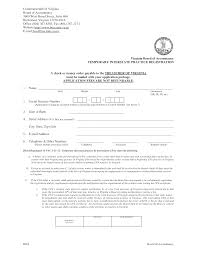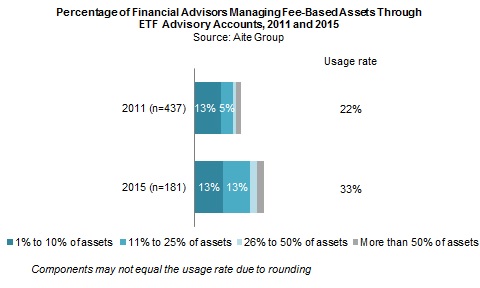
There are three types of financial statements: the Income statement, Balance sheet and Statement of Change in Equity. While all of them contain useful information, they are not all created equally. How they are used will determine the differences. Let's look at some examples of statements and how they can be used to help you understand your business. All provide information that you can use for better decisions.
Income statement
An income (or balanced) sheet is one type of major financial statement. It tracks the movement of funds into and from the company. Another type is the consolidated balanced sheet. It details the company’s assets, liabilities, stockholders’ equity and book value. These three types provide investors and creditors with a better understanding of the company and allow them to predict its future.
Also included in an income statement are expenses. These costs include those associated with the provision of goods or services. The cost-of-goods sold (COGS), represents the cost for materials and labor. Although they are not directly related to production, general administrative costs are essential to the organization. In the income statement are also listed depreciation and amortization as well as any other costs that relate to assets. The net income (also known as net profit) is the sum of all these expenses and represents the company’s profits or losses.
Balance sheet
The balance is a basic financial statement of a company. It gives investors a snapshot of the company's assets and liabilities. The amount of cash on hand is listed as an asset. A company might have liquid assets other than cash. These include accounts receivables and inventory. Other types of assets, such equipment or inventory, may not be included in the balance sheet.
The balance is the most basic and must be reviewed first. This document describes the company's assets, liabilities, and financial position. List assets according to their expected turnover. Following liabilities, current assets are listed first. Next are fixed assets, such a building. These assets are then deducted from total assets. This is then divided into two categories: current and long term. It is important to know the differences between these two when analysing a company's assets or liabilities.
Statement of change in equity

The Statement of Change in Equity in financial statements is a section that reconciles opening and closing balances. The statement also describes the relationship between income statement, balance sheet. It covers all transactions not included in the income statement. This includes any withdrawals of equity, changes in accounting policies, or corrections made during the previous period. Here are the steps to prepare the Statement of Change in Equity. Verify that all balances are consistent and accurate.
The statement of change to equity shows the changes in equity since the previous period. It also shows changes in equity due to different factors like new monetary investment and bonus compensations. Statement of Change in Equity shows the links between the income statement, balance sheet and equity. This is useful information for investors and stockholders.
Notes to financial statements
Financial statements are not complete without the accompanying notes. The notes contain additional information that is not contained in the financial statements. These include revenue, payment terms and warranties as well as other relevant information. The notes are prepared on a "going concern basis", which assumes that the company will continue operating and can meet its liabilities. The notes may include additional information, such as details about the company's risks. Notes may also include information on future vulnerabilities.

The notes to financial statement are crucial for assessing the company's financial situation. Intangible assets are assets that are not physically tangible, such as trademarks and patents. These notes provide information on how the financial statements were combined. This consolidation is done to verify the financial statements of all the subsidiaries in a company. Footnotes show how consolidation was carried out. This makes it easier to see the financial performance of a company.
FAQ
What does an accountant do? Why is it so important to know what they do?
An accountant keeps track on all the money you make and spend. They keep track of how much tax is paid and allowable deductions.
An accountant will help you manage your finances, keeping track of both your incomes as well as your expenses.
They assist in the preparation of financial reports for both individuals and businesses.
Accounting is a necessity because accountants must know all about numbers.
In addition, accountants help people file taxes and ensure they're paying as little tax as possible.
What's the difference between a CPA or Chartered Accountant?
A chartered accountant is a professional accountant who has passed the exams required to obtain the designation. Chartered accountants have more experience than CPAs.
A chartered accountant also holds himself out as being able to give advice regarding tax matters.
The average time to complete a chartered accountancy program is 6-8 years.
What is a Certified Public Accountant and how do they work?
Certified public accountant (C.P.A.). A certified public accountant (C.P.A.) is an individual with special knowledge in accounting. He/she has the ability to prepare tax returns, and assist businesses in making sound business decision.
He/She also monitors the cash flow of the company and ensures that it runs smoothly.
How does an accountant do their job?
Accountants work together with clients to maximize their money.
They work closely alongside professionals like bankers, attorneys, auditors and appraisers.
They also assist internal departments such as human resources, marketing, sales, and customer service.
Accountants are responsible to ensure that the books balance.
They determine the tax due and collect it.
They also prepare financial statements which show how well the company is performing financially.
How long does it usually take to become a certified accountant?
Passing the CPA examination is essential to becoming an accountant. Most people who wish to become accountants study for around 4 years before taking the exam.
After passing the test, one has to work for at least 3 years as an associate before becoming a certified public accountant (CPA).
How can I get started keeping books?
For you to begin keeping your books, you'll need a few things. These items include a notebook and pencils, calculator, staplers, envelopes, stamps and a filing drawer or desk drawer.
What happens to my bank statement if it is not reconciled?
You might not realize that you made a mistake in reconciling your bank statements until the end.
This will force you to go over the entire process all over again.
Statistics
- Employment of accountants and auditors is projected to grow four percent through 2029, according to the BLS—a rate of growth that is about average for all occupations nationwide.1 (rasmussen.edu)
- a little over 40% of accountants have earned a bachelor's degree. (yourfreecareertest.com)
- a little over 40% of accountants have earned a bachelor's degree. (yourfreecareertest.com)
- The U.S. Bureau of Labor Statistics (BLS) projects an additional 96,000 positions for accountants and auditors between 2020 and 2030, representing job growth of 7%. (onlinemasters.ohio.edu)
- In fact, a TD Bank survey polled over 500 U.S. small business owners discovered that bookkeeping is their most hated, with the next most hated task falling a whopping 24% behind. (kpmgspark.com)
External Links
How To
How to do bookkeeping
There are many accounting software options available today. Some cost money while others are free. Most accounting software has basic features, such as invoicing. The following list provides a brief description of some of the most common types of accounting packages.
Free Accounting Software - This free software is often offered to personal use. Although it may not have all the functionality you need (e.g., you can't create your own reports), it is easy to use. A lot of free programs can be used to download data directly to spreadsheets. This makes them very useful for anyone who wants to do their own analysis.
Paid Accounting Software is for businesses with multiple employees. They typically include powerful tools for managing employee records, tracking sales and expenses, generating reports, and automating processes. The majority of paid programs require a minimum one-year subscription fee. However, some companies offer subscriptions that are less than six months.
Cloud Accounting Software - Cloud accounting software lets you access your files via the internet from any device, including smartphones and tablets. This program is becoming more popular as it can save you space, reduce clutter, makes remote work much easier, and allows you to access your files from anywhere online. You don't even need to install any additional software. All that is required to access cloud storage services is an Internet connection.
Desktop Accounting Software: Desktop software works in a similar way to cloud accounting software. However, it runs locally on your own computer. Like cloud software, desktop software lets you access your files from anywhere, including through mobile devices. You will need to install the software on your PC before you can use it, however, unlike cloud software.
Mobile Accounting Software: Mobile accounting software is specifically designed to run on small devices like smartphones and tablets. These programs make it easy to manage your finances wherever you are. They have fewer functions that full-fledged desktop apps, but they're still extremely useful for people who travel often or run errands.
Online Accounting Software - Online accounting software was created primarily to serve small businesses. It has all the features of a traditional desktop software package, but with a few additional bells and whistles. The best thing about online software is the fact that it does not require installation. You simply log in to the site to start the program. Another advantage is the fact that you will save money because you won't have to go to a local office.